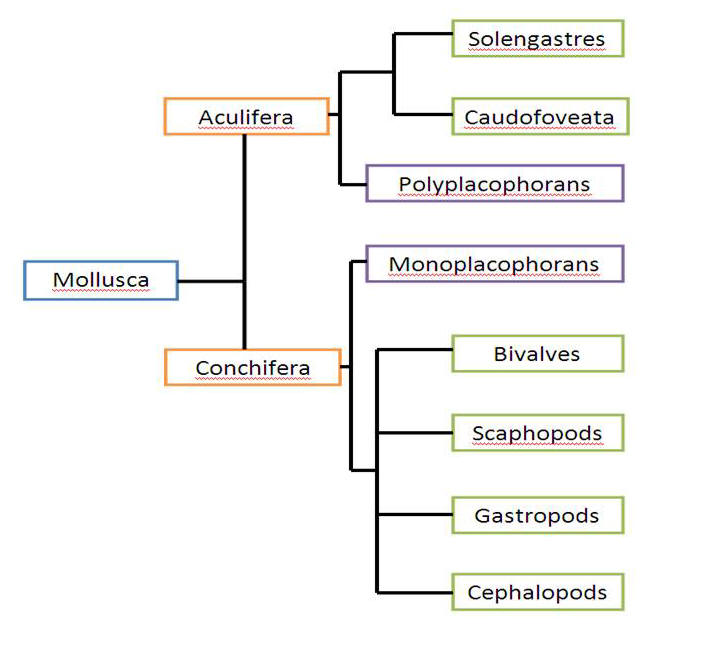Ancestry
All organisms are placed into phylogenic trees to illustrate how closely they are related to other organisms. These trees can be based on multiple characterizations that are shared by different groups or species, including everything from morphological characteristics to molecular characteristics. Below are two trees that help demonstrate how Conus magus is related to all other species.
The above phylogenetic tree illustrates the relationship of the three domains: Bacteria (blue), Archaea (red), and Eukarya (brown). As stated on the classification page Family, Conus magus belongs to the domain Eukarya, where all the organisms are multicellular eukaryotes. Within this domain there are many kingdoms, including the Animal Kingdom where cone snails fall. The kingdoms are placed into these domains because they share common characteristics among their species. Therefore, looking at this tree you can see that the Magician's Cone Snail is more closely related to Madagascar Periwinkle, a plant, than Streptococcus mutans , a bacteria, because both the Magician's Cone Snail and the Madagascar Periwinkle are both members of the domain Eukarya, while Streptococcus mutans is a member of the domain, Bacteria.

Image created by author with help from Trisha Marie Boldt.
This phylogenetic tree shows how Conus magus is related to other organisms within the Phylum Mollusca. As a member of the Gastropods it can be seen above that they are most closely related to the Bivalves, Scaphopods, and Cephalopods. All four of these Classes share many similar characteristics, like a three-part body and a specialized eating structure called a radula.
The phylogeny really illustrates how all things are interrelated and new species are continually evolving. Evolution can only take place with lots and lots of reproduction. To learn about the reproduction of Conus magus please visit The Birds & The Bees.
Return Home.
Created by Kayla Haas, BIO 203
To Check out other organism websites visit University of Wisconsin-La Crosse
www.multipleorganisms.net
www.uwlax.edu
